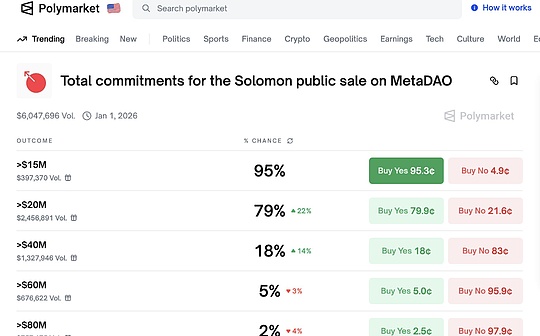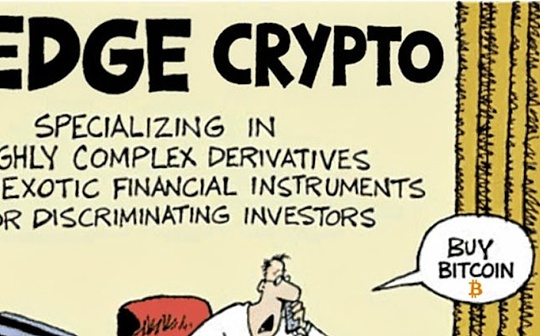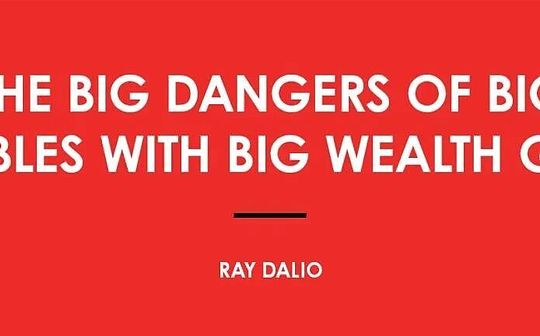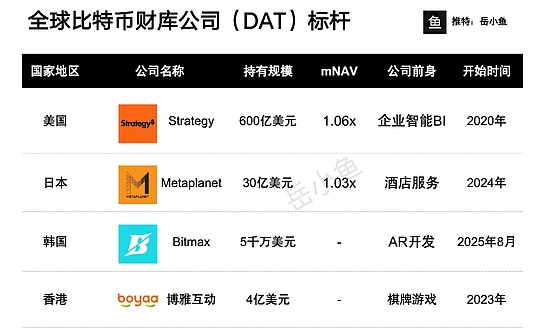
Although the market is concentrated in BTC and Solana ecology today, the ETH ecology seems unknown.However, when Eigenlayer is officially launched, ETH ecological benchmark interest rates are lifted, and funds will still flow back to the Defi ecology. When the so -called buying is not allowed, at this time, the RestAKing ecology that ambush in Agilely is a very high option.
Foreword
After Ethereum transferred to POS, the WARPPED ETH issued by Lido, Rocket POOL and other pledged underlying protocols brought 4%risk -free interest rates from POS ecosystems, and Eigenlayer will solve the security and network solution of Ethereum pledged nodes.Coupling, provided to multiple POS networks through RESTAKE.Although it has not yet officially launched, it is foreseeable that RESTAKE can further increase the benchmark interest rate in the Ethereum ecosystem to 6%-8%.Adding leverage on this benchmark interest rate, we can expect users to get about 10%of long -term risk -free income.Agilely is the first protocol in many LSDFI protocols to embrace RESTAKING token.
About Agilely
In short, Agilely is a stable currency $ USDA issuance protocol.USDA is a full -chain stable currency based on the liquity model. Through multiple innovative mechanisms, the USDA is always anchored at $ 1 while ensuring that users can obtain interest while ensuring that users hold interest to ensure coexistence of income and circulation attributes.
After the rise of the LSD track this year, the rising and stable currency of liquidity, stability and benefits quickly won the favor of Defi players.In May this year, the first shot was launched by Lybra, and then Gravita, Raft, and Prisma followed closely. The total TVL reached $ 400M, which grew into a power that cannot be ignored.Agilely has not only retains the most innovative points in product design, but also ensures that the token design can capture the real income of the agreement. This is the advantage that the same track agreement does not have.
Stable coin models based on CDP (COLLERALALALALALAL POSITION, debt mortgage position) were first proposed by MakerDao. Users are over -mortgaging assets in the agreement as a guarantee to borrow stable currency issued by the agreement.However, up to 20%of the mortgage rate causes capital efficiency below.
>
DAI’s Collateral Rainio (Source: https: //daistats.com/#/overview)
Later, Liquity proposed the most classic CDP stabilized currency model, that is, to achieve up to 110%of MCR by hard soft dual anchor and three -layer clearing model, to achieve excellent capital efficiency.The stable currency LUSD issued by liquity has been anchored at $ 1 after two years of market for two years, and its mechanism design is perfect.Agilely uses the price stability mechanism of liquity to ensure the stability of USDA in price.
Liquity stabilization mechanism review
Before we introduce USDA, first review the stability mechanism of liquity to make readers better understand.Liquity’s CDP stablecoin LUSD design mainly includes the following aspects. Soft/Hard Peg brings LUSD price anchor.Control.The common role of these modules provides a guarantee for the stability of LUSD, and also makes it the best model of CDP -based stablecoin.
Liquity price stability mechanism
Lusd is the most important and core attribute of the anchored US dollar as a stable coin.Its price stability mechanism is divided into two parts, Hard PEG and Soft PEG.The HARD PEG section shall be $ 1.1 by determining the minimum 110%mortgage rate. If the price of LUSD exceeds $ 1.1 then the user can cast LUSD through the mortgage of Ethereum (110%mortgage) and sell it in the market to obtain risk -free arbitrage;By providing a hard redemption/repayment channel, the lower limit of the price is 1. If the LUSD market price is lower than 1, anyone can buy LUSD on the market to redeem ETH/redemption collateral from the liquity protocol for risk arbitrage.By providing an open arbitrage channel, the price of LUSD is stable at $ [1-redemption rate, 1.1].
In the Soft PEG section, it is divided into several parts. The first is the long -term market psychological enhancement dominated by the protocol. The value of the liquity system to strengthen people’s 1LUSD is 1USD.The choice tendency of people without communication), as long as the psychological expectations of the price range of LUSD in the minds of market users, the psychological expectations of the price range of LUSD, then the user will not buy LUSD at a high price (at a high price (at a high price (at a high price$ 1.09 Buy the maximum loss of LUSD for 9%and the maximum profit of 1%). LUSD will not be sold at the price (there is no risk arbitrage in the liquity protocol), then the price of LUSD will not be close to the upper limit and lower limit; in addition to this,There is also a one -time distribution fee determined by the algorithm as an additional stable mechanism. Compared with interest rate hikes, increasing the issuance rate can directly affect the number of new LUSD casting. See the “supply and demand control mechanism” below,The number of issuances of basic currencies is controlled by the common role of issuance rate and redemption rate, thereby regulating the market price of LUSD.
In summary, the price stability mechanism of LUSD can be described as shown below.
>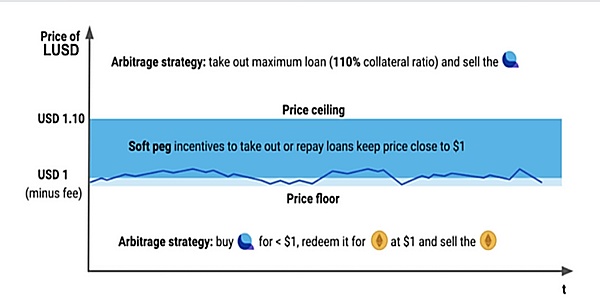
LUSD’s price stability mechanism
It turns out that this stable mechanism is effective.
Liquity liquidation mechanism
As mentioned earlier, the liquity liquidation mechanism is allocated by the stabilization pool-warehouse re-distribution-recovery mode as the protocol security defense line.In normal operations, liquidation users (that is, users who fall to less than 110%of the mortgage rates) are usually used as the stabilization pool as the clear opponent.However, if the LUSD resources in the stabilized pool are not enough to support the liquidation position, the system will start the position re -distribution mechanism.Finally, when the mortgage rate of the entire system is below 150%, the system will switch to the recovery mode.
In this clearing process, the stabilization pool as the first line of defense is also the most commonly used protective means.The debt re -distribution and recovery model is mainly the protocol security protection mechanism in extreme circumstances.
-
Stable Pond: It exists as an opponent of the user at the agreement level.LUSD holders deposit LUSD into the stable pool. When the position needs to be liquidated, the external liquidator calls the stable pool for liquidation.The liquidator received 0.5%mortgage and 50lusd GAS subsidies.The remaining 99.5%ETH is owned by the stable pool deposit.Theoretically stabilized pool depositee can get a maximum of 10%ETH income (just fell below 110%of the liquidation line, and obtains 1.09945 times the ETH that destroys LUSD), but it should be noted that the action is actually the actual action is actuallyBuy ETH in the ETH decline interval. If ETH’s price continues to fall without timely extraction of revenue exchange, it may bear losses.
-
Bar warehouse reconstruction: When the LUSD in the stable pool is consumed, the system re -assigns the ETH and LUSD to be repaid to all the existing positions according to the proportion.The higher the mortgage rate, the more debt and mortgage received, so as to ensure that the system will not have serial liquidation.As of now, even when the market has plummeted, the system has not been re -assigned.
-
Restore mode: When the total mortgage ratio of the system is less than 150%, the system will enter the recovery mode, and quickly pull the overall mortgage rate of the system back by 150%.In the recovery mode, the liquidation behavior is more complicated, and this article will not be repeated in this article.Generally speaking, the positions with a mortgage rate of less than 150%may be liquidated, but the protocol sets a 10%upper limit for the user’s maximum loss.Liquity entered the recovery mode during the 5.19 plunge. After the details, the LIQUity officially summarized How liquity handled its first big stress test.
Liquity supply and demand control mechanism
As a stablecoin, LUSD is similar to traditional currencies, and control currency supply through the operation of the currency market.The specific is to control the supply and demand of LUSD by adjusting the interest rate of casting and redemption. The casting rate and redemption rate will be adjusted according to the time and cycle of redemption.The redemption rate will be reduced. When the redemption behavior increases, the redemption rate increases.Compared with the traditional currency market operation, the mechanism is more defensive, and the focus is on preventing large -scale redemption by increasing the redemption rate.
Only one -time coins and redemption fees are charged in liquity, and they are calculated based on the global variable Baserate in the agreement.The casting cost is equal to the Baserate*casting amount, and the redemption cost is equal to the value of the value (baserate+0.5%)*the value of the red.
When no redemption occurs, the Baseerate will decrease over time and the half -life is 12h.When a redemption behavior occurs, Baserate is calculated according to the following formulas. Among them, B (T) is the Baserate of Time T. M is the number of Rama LUSDs. N is the current supply of LUSD. It is a constant parameter.
>
By adjusting the cost generated by the redemption, the influence on the lower limit of the price in the hard anchor.In the calculation of the liquity white paper, based on the theory of monetary quantitative theory, the? Is set to 0.5, and the maximum profit of the profit will be redeemed and recovered.See Derivation for the specific derivation process.
Overall, liquity to ensure the normal operation of the overall system through excellent mechanism design, it also proves the feasibility of this system. Since its launchEssence
Agilely mechanism -based Agilely mechanism innovation
Mortgage
At the mortgage level, users in Agilely use ETH, mainstream WRAPPED ETH, and GLP as mortgages to cast USDA. After that, they will also access RESTAKING token to inherit the interest rates itself into USDA and increase USDA interest rates.Essence
Interest rate model
This section mainly discusses the rates in the agreement, including coins, redemption and borrowing fees.The coin and redemption costs are disposable expenses, and the cost of borrowing is the cost generated by the accumulation of non -repayment debts over time.
Coinage fee: Refers to the one -time fee that users need to pay when they cast stable coins in the protocol.Agilely chose to use the liquity Baseerate model and modify it on it.(For discussions about Baserate for details, please refer to the “supply and demand control mechanism” of the “LIQUITY Mechanism Review” in this article), adding attenuation factor in the part of Baseerate over time, and determining different attenuation factors for each instance, and will make it.The formula description is as follows:
>
Raising fee: Refers to the cost required by the user to return the loan from the agreement from the agreement, which is usually higher than the coinage fee.Agilely’s coinage fee is Baserate+0.5%;
Borrowing fee: Refers to the accumulated cost of users over time over time, some agreements to inspire users to choose from for long -term borrowing.Regularly regulate.
Stable mechanism
This section mainly discusses Agilely as a stable mechanism for stablecoins, and is mainly divided into two parts: Hard PEG and Soft PEG.
-
HARD PEG: Provide 110%of the MCR on ETH mortgage to ensure the upper limit of the price and provide a redemption channel to ensure the lower limit
-
Soft PEG: In addition to relying on the long -term market psychological game led by the agreement to reach the Xielin point of 1usda = 1USD, Agielly is also embedded in the ADI (Agilely Dynamic Interest) inside the Agielly.(See the “interest rate model” in the previous section).
Liquidation mechanism
In the discussion of the clearance mechanism, we based on the three-layer clearing mechanism of liquity (stabilized pool-warehouse reconstruction-recovery mode) as the benchmark to summarize the modification of Agilely on it.
>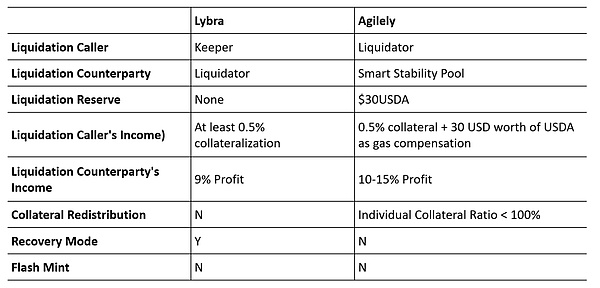
While ensuring the safety of the system, Agilely is more fair. The liquidation interface is placed on the front end to reduce the threshold, so that more people are involved. Unlike Lybra, the professional BOT needs to participate in the liquidation, and Agilely further optimizes the conventional Stability Pool to SmartStability Pool, the USDA invested by users will be placed in Stability Pool, which is most likely to occur and the maximum mortgage of potential liquidation funds.
PSM
In addition to the pledge income of Ethereum, Agilely is also committed to capturing the RWA income and diversified agreement revenue. By setting up the PSM module to increase interest rates, the rainbow suction of DAI is achieved.Go to MakerDao’s national debt income.
Value flow in the agreement
>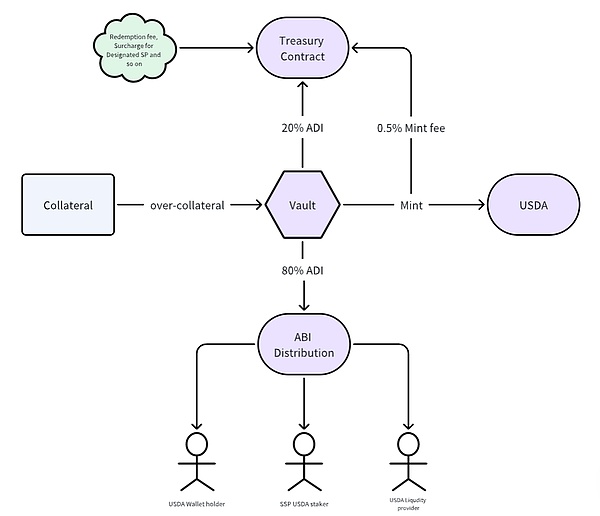
There are a number of business income in the Agilely protocol, including casting/redemption and borrowing costs, PSM transaction costs, additional costs of stable pools, income of mortgage, and RWA income in PSM.
-
ABI (Agilelly Benchmark Interest) flows to USDA holders, LP (UNISWAP USDA-ETH POOL, and Curve USDA-3Pool) and the USDA pledged by the stable pool;
-
VEAGL: Users who pledge DLP to obtain VEAGL can also capture the real benefits of the agreement in addition to governance rights;
-
Stable pool income: The remaining business income is allocated to the stable pool as pledge income;
Token design
In this section, we will sort out and compare the design of the agreement token level.It mainly focuses on the distribution method of tokens and the actual utility of the tokens. The token related design is usually related to the vital interests of protocol users, so we can analyze the sustainability of Agilely from these perspectives.
Token effect
As an important part of the agreement, the design can directly determine the price of the tokens to capture the real value in the agreement and affect the subsequent development of the project.In DEFI, the value support of the tokens usually comes from two major aspects, governance and income.Among them, the income is the token holders that can sustainable the income brought by the agreement. This is the basis of all; governance is mainly the participation of long -termists of the project, but it is more based on the income. NextFrom these two perspectives, sort out Agilely’s token AGL.
Govern
The LP of the user locking Balaancer Agl/ETH 80:20 POOL can be converted to VEAGL to get voting rights in the protocol. The voting right is proportional to the number of lock -locked DLP. After the lock -up period is expired, it can be converted to AGL.At the level of governance, VEAGL can determine the incentive allocation of AGL on different mortgaged positions.
income
Different from the LSD CDP project on the market now, AGL is committed to capturing real income in design, not the Ponzi logic that is essentially digging Erchi.AGL is mainly distributed as an incentive of each mortgage pool in the form of ESAGL. ESAGL has a 90 -day unlocking period.And VEAGL holders can capture income generated by the protocol business, including casting/redemption, borrowing costs, PSM redemption costs, and additional costs pledged in the stable pool.
>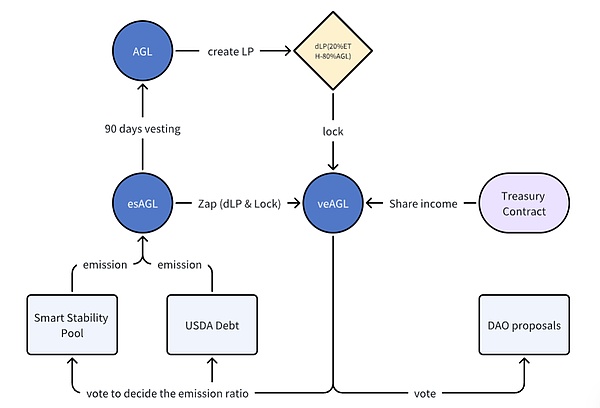
Summarize
Although the market is concentrated in the BTC and Solana ecology today, ETH ecosystems seem unknown, and Balst has caused the entire DEFI to cause the DEFI track to not be conspicuous in the currency price.However, when EigenLayer is officially launched, ETH ecological benchmark interest rates will be re -flow back to the Defi ecology. At that time, Agilely will be the first choice for DEFI users with its excellent products and token design.When the so -called buying at the time when no one is asking, the RESTAKING ecosystem that ambush through Agilely at this time is a very high option.
>

